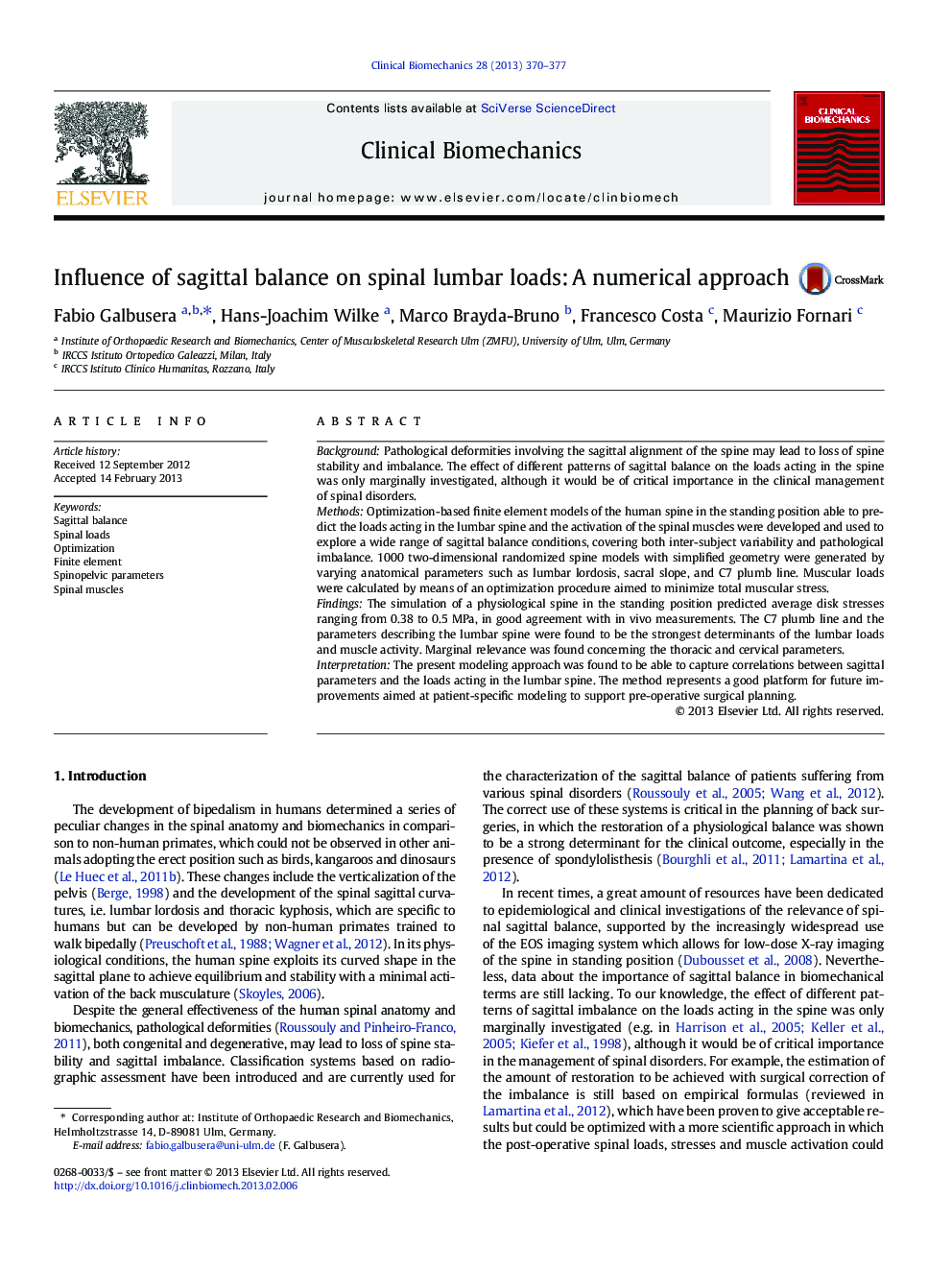| Article ID | Journal | Published Year | Pages | File Type |
|---|---|---|---|---|
| 6204937 | Clinical Biomechanics | 2013 | 8 Pages |
BackgroundPathological deformities involving the sagittal alignment of the spine may lead to loss of spine stability and imbalance. The effect of different patterns of sagittal balance on the loads acting in the spine was only marginally investigated, although it would be of critical importance in the clinical management of spinal disorders.MethodsOptimization-based finite element models of the human spine in the standing position able to predict the loads acting in the lumbar spine and the activation of the spinal muscles were developed and used to explore a wide range of sagittal balance conditions, covering both inter-subject variability and pathological imbalance. 1000 two-dimensional randomized spine models with simplified geometry were generated by varying anatomical parameters such as lumbar lordosis, sacral slope, and C7 plumb line. Muscular loads were calculated by means of an optimization procedure aimed to minimize total muscular stress.FindingsThe simulation of a physiological spine in the standing position predicted average disk stresses ranging from 0.38 to 0.5Â MPa, in good agreement with in vivo measurements. The C7 plumb line and the parameters describing the lumbar spine were found to be the strongest determinants of the lumbar loads and muscle activity. Marginal relevance was found concerning the thoracic and cervical parameters.InterpretationThe present modeling approach was found to be able to capture correlations between sagittal parameters and the loads acting in the lumbar spine. The method represents a good platform for future improvements aimed at patient-specific modeling to support pre-operative surgical planning.
